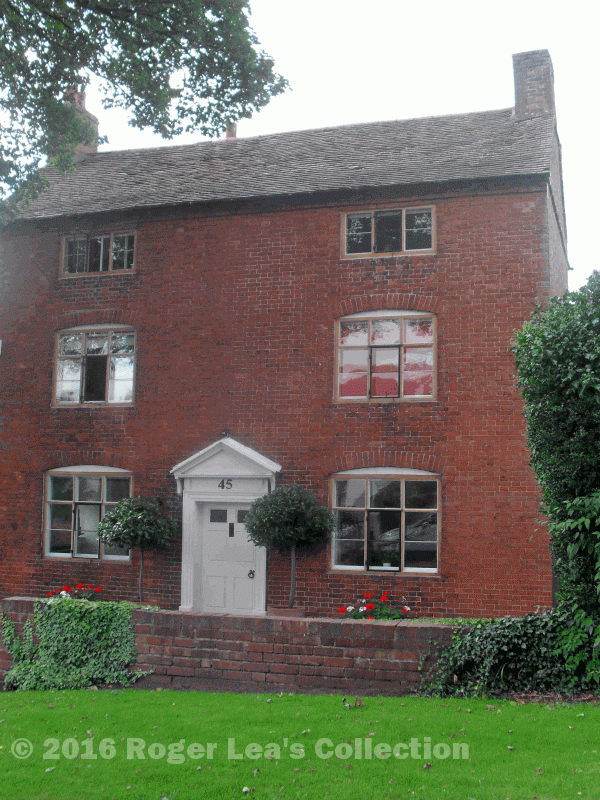Hill Village in 1824 had changed greatly since medieval times, when most of the inhabitants were farmers with land in the open fields. In 1824 only six of the fifty-four householders in Hill Village Road were farmers, mostly with small holdings of less than thirty acres; only Thomas Loynes had more, with eighty-two acres - his farmhouse, rented from Mr. Perkins, stood opposite the pub known until recently as the White Lion. There were eight short terraces of small houses where twenty-eight landless cottagers lived, Edmund Rochford had the White Lion pub and Edward Lambley was landlord of the Barley Mow, at the Mere Green end of the township. This much can be learned from the Corn Rent records of 1824; the next informative source is the 1841 census.
The Corn Rent named the occupiers of fifty-four houses in Hill Village Road in 1824, and the 1841 census names fifty-three households. Only twenty-one names occur in both records, so there must have been thirty-two newcomers over the seventeen years. All the householders were married, some with large families - over a hundred children enlivened the street as they walked down the hill to the school at Mere Green.
There were twenty-five families headed by labouring men, mostly farm workers, while eight men gave their occupation as farmers. One of the farmers, Thomas Turner, aged 55, was also recorded in 1824, when he leased his farm of seventeen acres from William Shenstone. The farm continued into the 1850s, when the owner was Mr. Austin and the tenant William Snape, but by 1860 the farm ceased to exist when its fields were auctioned off to different buyers. Another farmer in the 1841 census, Edward Johnson, aged forty, was also recorded in 1824 when his fields totalled only twelve acres; he was one of the few owner-occupiers in Hill, with a farmhouse on the corner of Tower Road where now an apartment block stands. Johnson gained a further six acres when the commons were enclosed, but when he died in 1857 his widow put the land up for auction when the six fields were purchased by six different buyers and the farm ceased to exist - there had once been many such small-scale farms in Hill, but now their days were numbered.
Johnson may have had other sources of income - his farmhouse was the best house in Hill, rated at £37.12s.0d, compared with the rating of £28.2s.0d for the large surviving farmhouse at 45 Hill Village Road, and Johnson’s outbuildings included a workshop and a cistern house. By contrast, many of the single-storey cottages were tiny, only fourteen feet by twenty-one feet and valued at less than £4, the meanest only £1.12s.0d.
Seventeen of the householders were not engaged in agriculture. The woodworkers included three carpenters, a round joiner, a wheelwright, a cooper and a cabinet maker and there were butchers, tailors, publicans, maltsters and a shopkeeper. Apparently there was little change in the make-up of the population since 1824 in spite of the drastic changes which had occurred - Hill Village Road was no longer the main road to Lichfield since the new by-pass road was built in 1827, and the extensive commons surrounding Hill were all enclosed by 1841. The Industrial Revolution which transformed neighbouring towns only affected Hill by taking away some cottage industries; although there were thirty-three newcomers, they were all from the local area.
Some changes are revealed by the Parochial Valuation of 1856, which shows that some farmhouses had been converted to residential use, some cottages demolished to make way for a single house, and one cottage converted into a house, but it was not until the twentieth century that Hill Village Road took on its present character.
